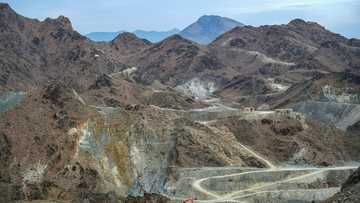Rare earths: strategic metals key to future technologies
Rare earths, which President Donald Trump hopes to secure from Ukraine as part of a deal for US aid, are strategic metals essential for industries developing computers, batteries, and cutting-edge energy technology.
CHECK OUT: Education is Your Right! Don’t Let Social Norms Hold You Back. Learn Online with LEGIT. Enroll Now!
Are they rare?
Not really. With names like dysprosium, neodymium and cerium, rare earths are a group of 17 heavy metals that are actually abundant in the Earth's crust across the globe.
In a 2024 assessment, the United States Geological Survey estimated there were 110 million tonnes of deposits worldwide, including 44 million in China -- by far the world's largest producer.
A further 22 million tonnes are estimated in Brazil, 21 million in Vietnam, while Russia has 10 million and India seven million tonnes.
But mining the metals requires heavy chemical use that results in huge amounts of toxic waste and has caused several environmental disasters, making many countries wary of shouldering the heavy financial costs for production.
They are often found in minute ore concentrations, meaning large amounts of rock must be processed to produce the refined product, often in powder form.
Why are they special?
Each of the 17 rare earths are used in industry and can be found in a wide variety of everyday and high-tech devices, from light bulbs to guided missiles.
Europium is crucial for television screens, cerium is used for polishing glass and refining oil, lanthanum makes a car's catalytic converters operate -- the list in the modern economy is virtually endless.
And all have unique properties that are more or less irreplaceable or can be substituted only at prohibitive costs.
Neodymium and dysprosium, for example, allow the fabrication of almost permanent, super-strong magnets that require little maintenance, making viable the placement of ocean wind turbines to generate electricity far from the coastline.
China in the lead
For decades, Beijing has made the most of its reserves by investing massively in refining operations -- often without the strict environmental oversight required in Western countries.
China has also filed a huge number of patents on rare earth production, an obstacle to companies in other countries hoping to launch large-scale processing.
As a result, many firms find it cheaper to ship their ore to China for refining, further reinforcing the world's reliance.
Strategy and supply
The United States and European Union get most of their supply from China, but both are trying to boost their own production and better recycle what they use to reduce dependence on Beijing.
At the height of a US-China trade dispute in 2019, Chinese state media suggested that rare earth exports to the United States could be cut in retaliation for American measures, sparking fear among a range of manufacturers.
Japan saw first-hand the pain of a cut-off in 2010, when China halted rare earth exports over a territorial conflict.
Since then, Tokyo has pushed hard to diversify supplies, signing deals with the Australian group Lynas for production from Malaysia, and ramping up its recycling capabilities.
Trump said Monday he wanted to reach a deal in which Kyiv guaranteed supplies of rare earths in return for US aid, an idea floated by Ukrainian President Volodymyr Zelensky last year.
alb-cho/np/klm
© Agence France-Presse
PAY ATTENTION: Сheck out news that is picked exactly for YOU ➡️ find the “Recommended for you” block on the home page and enjoy!
Source: AFP





